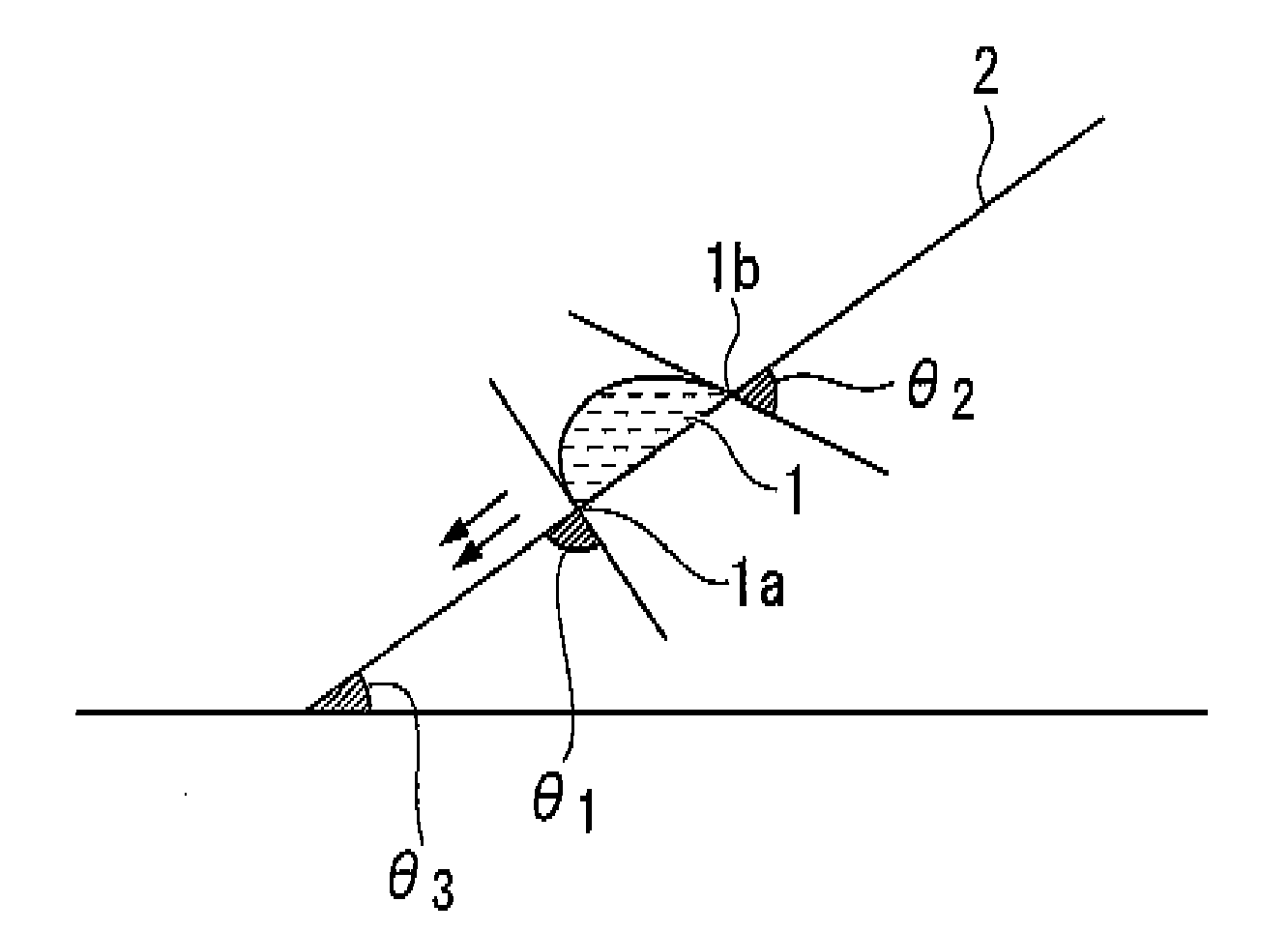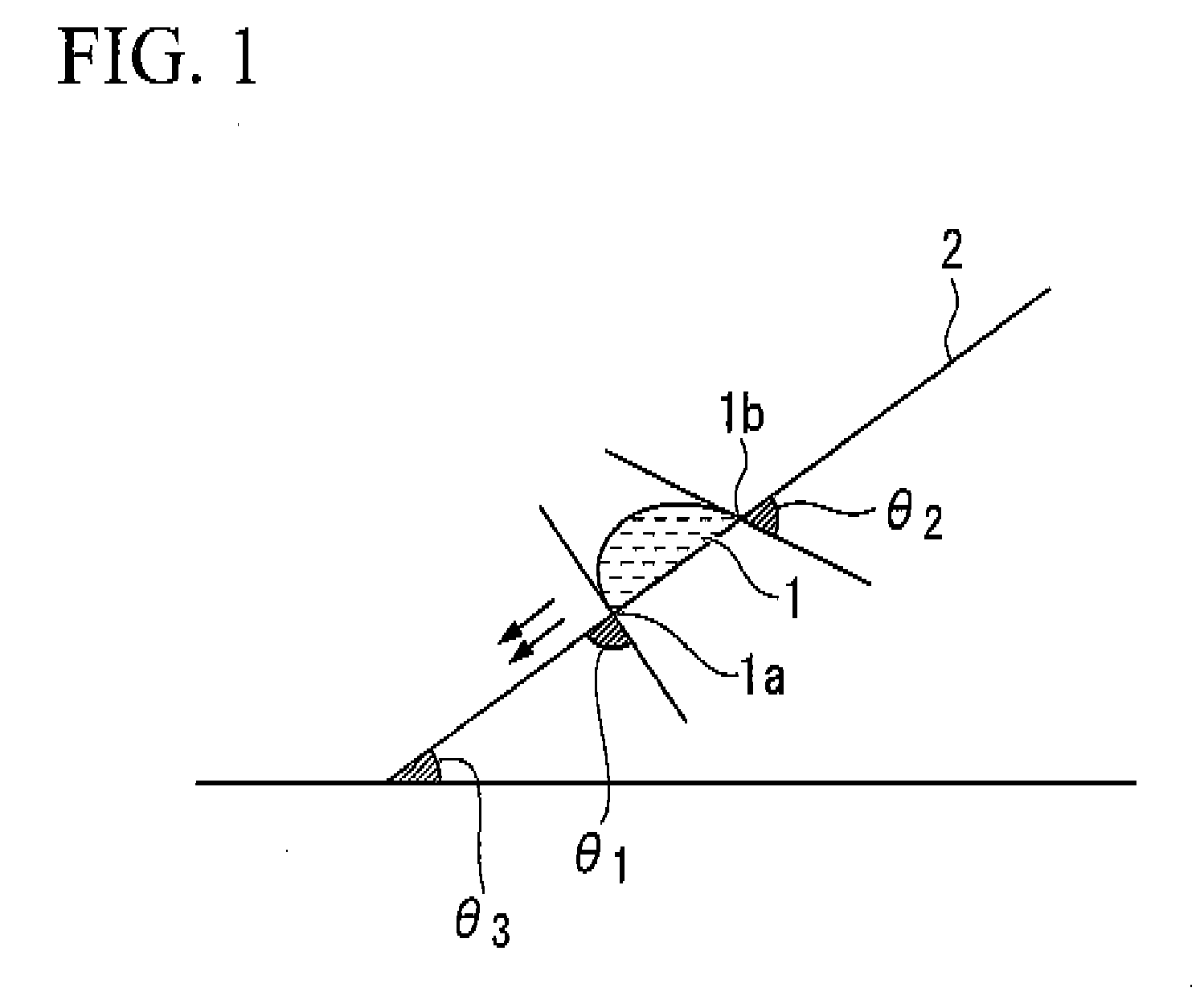Fluorine-containing compound, resist composition for immersion exposure, and method of forming resist pattern
a technology of resist composition and fluorine, which is applied in the direction of photo-taking process, photosensitive materials, instruments, etc., can solve the problems of adverse effects on productivity, speed decrease, etc., and achieves the effect of enhancing the hydrophobicity of the resist film surface, reducing substance elution, and adverse effects on lithography properties
- Summary
- Abstract
- Description
- Claims
- Application Information
AI Technical Summary
Benefits of technology
Problems solved by technology
Method used
Image
Examples
synthesis example 1
Step 1
[0391]8.00 g (37.7 mmol) of a [compound 1] represented by a structural formula shown below was dissolved in 45.33 g of tetrahydrofuran (THF). To this solution was added and dissolved 1.88 mmol of V-601 (a trade name) (a radical polymerization initiator; dimethyl 2,2′-azobis(2-methylpropionate)) manufactured by Wako Pure Chemical Industries, Ltd. The resulting solution was then subjected to a polymerization reaction under a nitrogen atmosphere for 6 hours at 70° C. Following completion of the reaction, the reaction solution was cooled to room temperature. Subsequently, an operation in which the reaction solution was added dropwise to a large volume of methanol to precipitate the polymer was repeated three times. The thus obtained polymer was then dried under reduced pressure at room temperature, yielding 4.25 g of a white powder (yield: 53%). This product is termed “[polymeric compound 1]”. This [polymeric compound 1] had a weight average molecular weight, determined by GPC an...
synthesis example 2
[0397]Under a nitrogen atmosphere at 0° C., 2.5 g (15 mmol) of 4-vinyl-2-naphthol was added to 40 ml of a THF solution containing 4.3 g (34 mmol) of 3,3,3-trifluoropropionic acid, 8.0 g (41 mmol) of ethyldimethylaminopropylcarbodiimide hydrochloride (EDCl) and 0.2 g (2 mmol) of dimethylaminopyridine (DMAP), and the resulting solution was then returned to room temperature and stirred for 3 hours. Following confirmation by thin layer chromatography (TLC) that the raw materials had been consumed, the reaction solution was cooled to 0° C., and water was added to halt the reaction. Subsequently, the reaction solution was extracted three times into ethyl acetate, and the resulting organic layer was washed twice with water. The solvent was then removed by evaporation under reduced pressure, and the resulting product was purified by silica gel chromatography (eluent: heptane-ethyl acetate), yielding 2.5 g of the target [compound 2] as an oily substance (yield: 60%).
[0398]The thus obtained [...
examples 1 to 4
, Comparative Examples 1 to 2
[0401]The components shown below in Table 1 were mixed together and dissolved to prepare a series of resist compositions.
TABLE 1Compo-Compo-Compo-Compo-Compo-nentnentnentnentnent(A)(B)(C)(D)(S)Example 1(A)-1(B-1)(C)-1(D)-1(S)-1[100][8.0][1.0][1.2][1500]Comparative(A)-1(B-1)—(D)-1(S)-1Example 1[100][8.0][1.2][1500]Example 2(A)-1(B-2)(C)-1(D)-1(S)-1[100][8.0][1.0][1.2][1500]Example 3(A)-1(B-2)(C)-1(D)-1(S)-1[100][8.0][3.0][1.2][1500]Example 4(A)-1(B-2)(C)-1(D)-1(S)-1[100][8.0][5.0][1.2][1500]Comparative(A)-1(B-2)—(D)-1(S)-1Example 2[100][8.0][1.2][1500]
[0402]The meanings of the abbreviations used in Table 1 are as shown below.
[0403](A)-1: a copolymer represented by chemical formula (A)-1 shown below. In the formula, the subscript numerals shown to the bottom right of the parentheses ( ) indicate the percentage (mol %) of the respective structural units within the copolymer.
[0404](B)-1: (4-methylphenyl)diphenylsulfonium nonafluoro-n-butane sulfonate.
[0405](...
PUM
| Property | Measurement | Unit |
|---|---|---|
| Composition | aaaaa | aaaaa |
| Solubility (mass) | aaaaa | aaaaa |
| Chemical formula | aaaaa | aaaaa |
Abstract
Description
Claims
Application Information
 Login to View More
Login to View More - R&D
- Intellectual Property
- Life Sciences
- Materials
- Tech Scout
- Unparalleled Data Quality
- Higher Quality Content
- 60% Fewer Hallucinations
Browse by: Latest US Patents, China's latest patents, Technical Efficacy Thesaurus, Application Domain, Technology Topic, Popular Technical Reports.
© 2025 PatSnap. All rights reserved.Legal|Privacy policy|Modern Slavery Act Transparency Statement|Sitemap|About US| Contact US: help@patsnap.com



